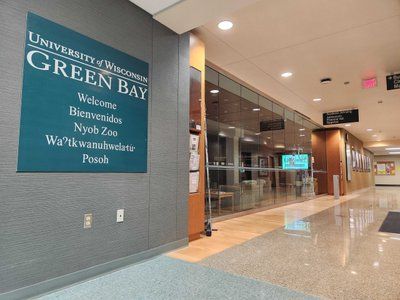By Tom Still
MADISON – State of Wisconsin Chief Information Officer David
Cagigal has a simple goal: To “never spend another dollar” on laying optical
fiber cable for data projects involving state government and its partners.
If that sounds unrealistic, consider that millions of miles
of “dark fiber” – meaning, high-bandwidth fiber not in use – already exist in
the United States. Even that’s just an estimate because the fiber installation
glut of the early 2000s led to myriad network bankruptcies, and today’s
successor companies don’t always know where all the fiber is buried.
Read this commentary in the Wisconsin State Journal here.
Finding and lighting dark fiber will help Wisconsin prepare
for the predicted bandwidth crunch brought on by the “Internet of Things” and
the explosion in mobile devices, Cagigal and UW-Madison Chief Information
Officer Bruce Maas told a July 28 meeting of the Wisconsin Innovation Network.
They also cautioned they can’t – and will not – go it alone.
“Wisconsin will only do well if we are working together
instead of competing,” said Maas, who leads the university’s data transmission
and storage efforts. “It shouldn’t just rest on the backs of the private
sector, because we’re all in this together.”
The UW-Madison campus itself is an IT networker’s dream,
with fast, 100-gigabit connections that allow transmission of massive amounts
of research data. The UW-Madison can receive 30 to 40 gigabits of data from the
Large Hadron Collider in Switzerland for analysis in Wisconsin, to cite one
prominent example.
Moving much smaller amounts of data to businesses, schools
and libraries closer to home is a different matter.
“What we don’t have is the ability to connect to schools all
over the state where there is some college education taking place (as well as)
libraries and places such as tribal reservations. We need to crack that nut in
Wisconsin,” Maas said. “Other states have figured this out and the ones that
have done it have set aside their differences between the public and private
sectors…”
With a largely private-sector background, Cagigal joined the
state Department of Administration three years ago. He said one of the first
things he did was reach out to Maas to see how they could cooperate.
The call for cooperation is driven by the need to ensure
that Wisconsin doesn’t fall behind other states and the world in terms of
high-speed broadband connections, which are necessary for virtually every
aspect of modern life, from business to health care, and from education to
entertainment.
The Internet of Things is one force pushing Internet use. The
IoT describes devices communicating with other devices in a variety of
settings, such as industry and transportation. Internet capacity is also being
strained by video in its many forms. Video consumes huge amounts of bandwidth
and most Internet service providers are struggling to keep up through
investments in wireless networks and other backbone services.
“(The Internet of Things) is going to require massive
amounts of capacity for carrying data,” Maas said, noting that businesses will
increasingly “send tons and tons of data everywhere and we’ve got to be able to
have the capacity.”
Some progress in better connecting Wisconsin is being made. Recently
announced was a Gigabit Business Park mapping project that involved the
Wisconsin Economic Development Corp. and the Wisconsin State Telephone
Association, which identified more than 130 business sites with 1 to 100
gigabits of bandwidth per second.
Cagigal said 350 Wisconsin libraries in Wisconsin were
connected to the Internet via high-speed fiber in the last year, including many
in rural communities. The recently passed state budget cleared the way for
better connections into thousands of Wisconsin schools, a project that Cagigal explained
cannot happen without public and private cooperation.
That includes learning and sharing where dark fiber exists
and signing contracts with carriers, large and small, with more competitive
rates. “We need everyone’s fiber,” said Cagigal, who noted he is already seeing
signs that private carriers are understanding the need to form public
partnerships.
In many Wisconsin cities, schools, libraries and other
public facilities are the only places where high-speed connections exist. By
working off that backbone, carriers can help businesses in more remote settings
gain the bandwidth they need, too. All of Wisconsin needs better broadband
connections to compete – and that need will only increase in the years to come.





